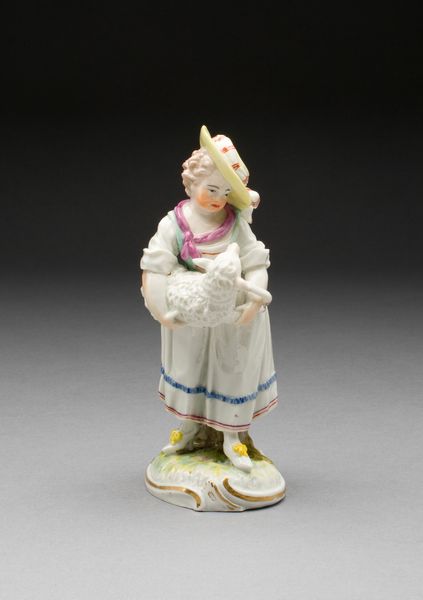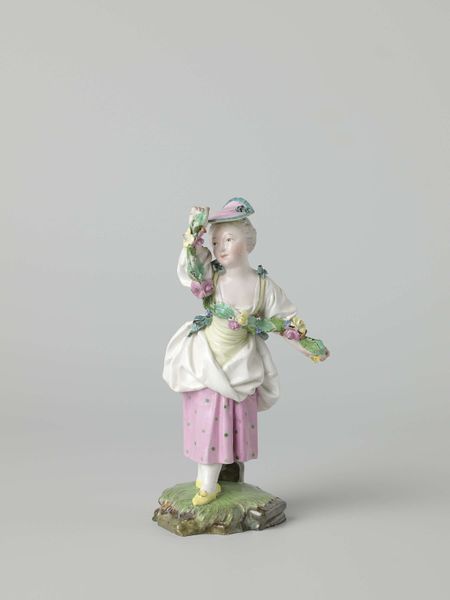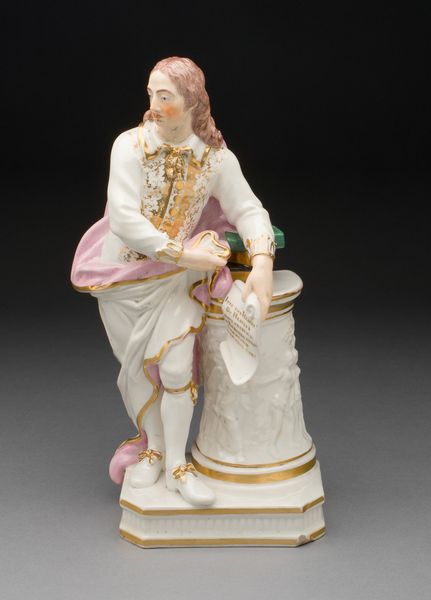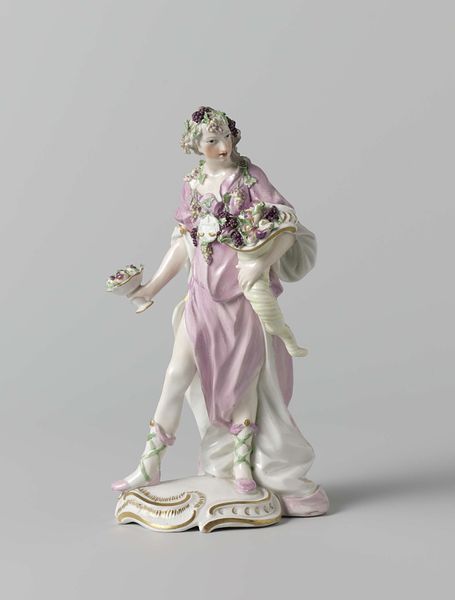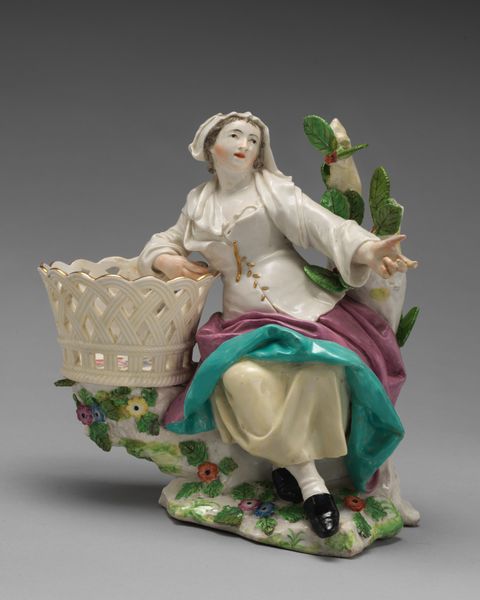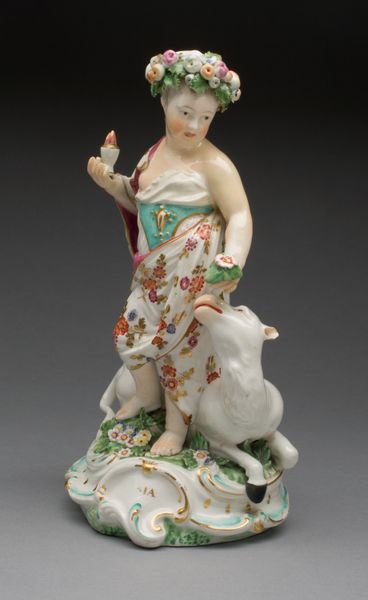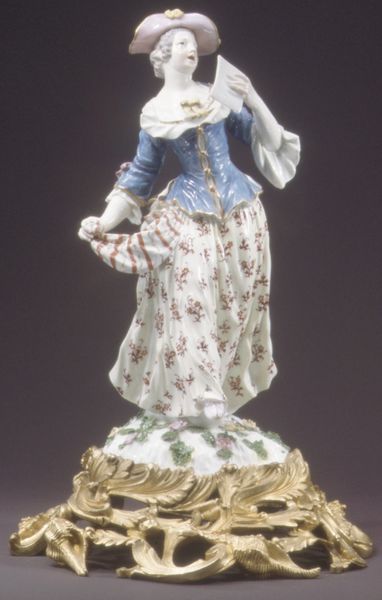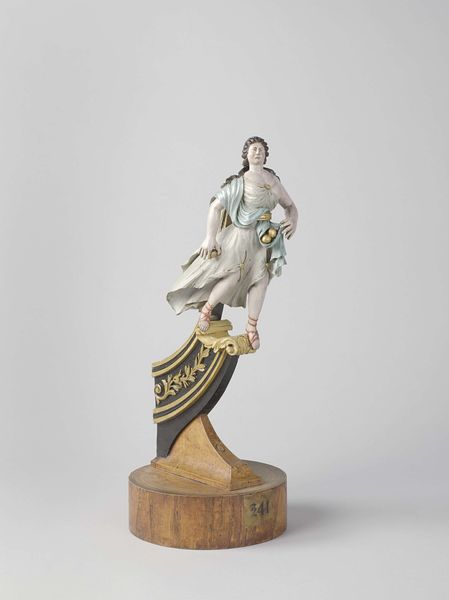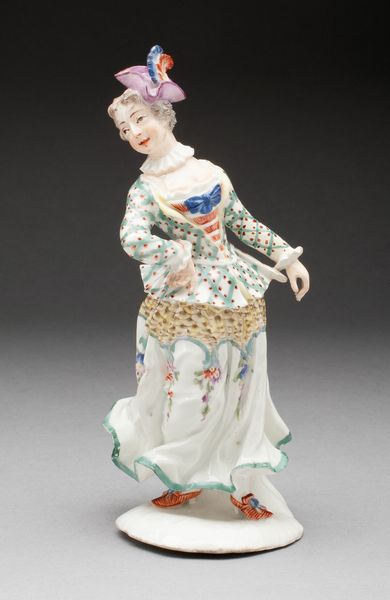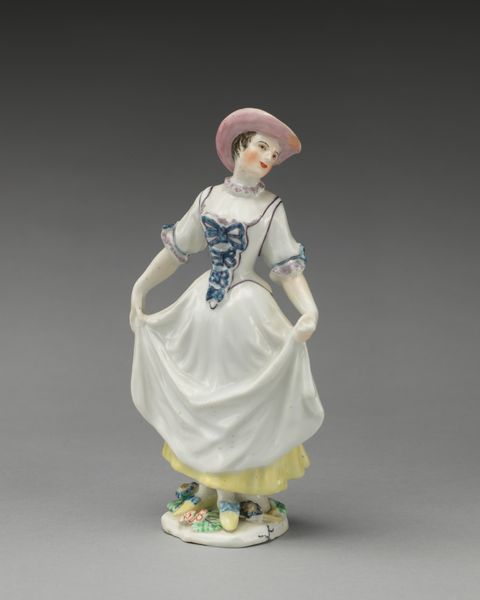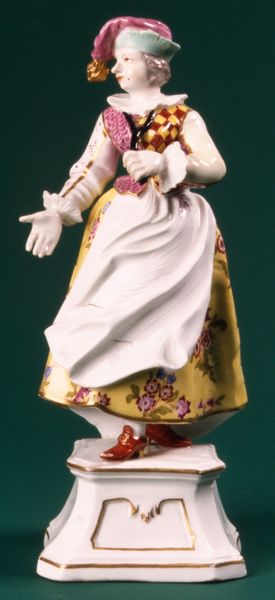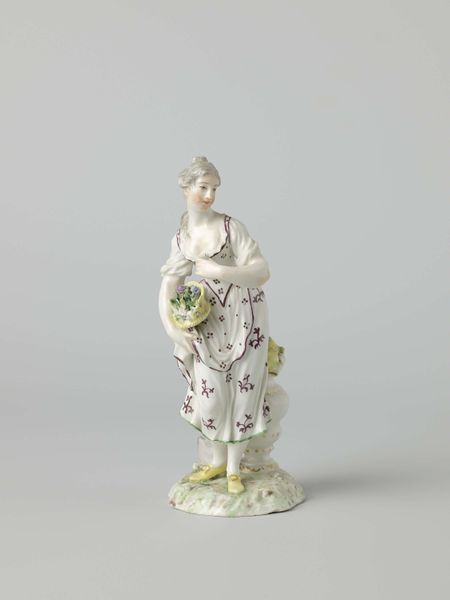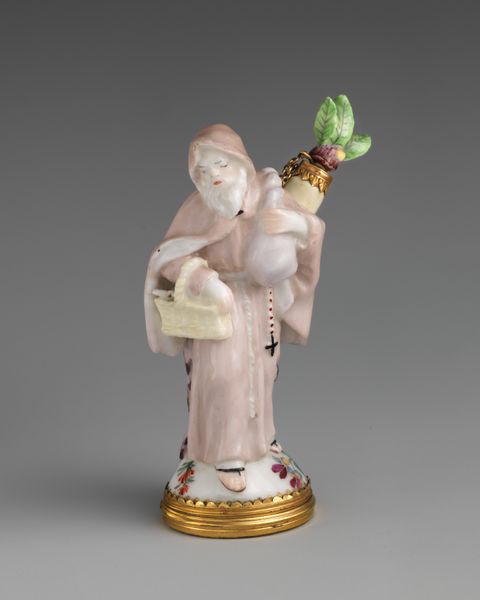
Copyright: Rijks Museum: Open Domain
Editor: This is "Boy and Girl in Oriental Dress," made of porcelain by Höchst, around 1767-1775. It's a striking sculpture, especially the textures and folds in the clothing, capturing the feel of draped fabric in a rigid material. How would you interpret this work, focusing on its formal elements? Curator: The undeniable tension here stems from the interplay of materiality and representation. Note how the rigidity of the porcelain contrasts sharply with the fluidity suggested by the cascading folds of the "oriental" dress. This juxtaposition serves to flatten the figures, almost rendering them as graphic emblems rather than fully realized forms. Editor: So you're saying the medium dictates our understanding? Curator: Precisely. The porcelain’s inherent limitations in malleability become the key expressive element. See how the subtle gradations of color, from the blush of the skin to the pale blues and pinks of the garment, are flattened, minimizing depth. The texture too, feels uniform, denying the variation we would expect in real cloth. What effect do you think these characteristics have on its perception? Editor: It feels almost like a critique. By removing depth and texture, it strips away a layer of illusion. The "oriental dress," therefore, becomes a costume, highlighting the artifice of representation. Curator: An insightful observation! Consider how the artist’s choice to mimic form contributes to this sense of flattening and costuming, creating a critical distance between subject and viewer. Editor: This close reading makes me see the sculpture as a sophisticated commentary on image construction, much more than just a decorative piece. Thanks. Curator: And, thanks to your observation skills, we were both able to peel away representational layers. The art object yields much more when we trust the structural language before our eyes.
